You’re probably already familiar with the omnipresent 5.56×45, but you’d have every right to wonder what the heck the 458 SOCOM is. So, let’s dive into 458 SOCOM vs 5.56.
458 SOCOM Origin Story
Back during Operation Gothic Serpent in 1993, American forces encountered difficulty neutralizing Somali National Alliance militiamen with their standard 5.56 firearms. The militiamen were tough customers, no doubt about it, but also they had a little trick up their sleeves: a drug called “qat.” That drug, in addition to making a great Scrabble word also dulls the ability to feel pain. This led to the development of a new cartridge – one that would not only work in existing M4 carbines and M16 rifles, but also offer substantially greater stopping power.
The 458 SOCOM never became very popular in the civilian market, although its compatibility with AR-15 rifles leads many shooters to wonder whether they’re missing out on something. Is the 458 SOCOM actually better than the 5.56? Or is it just a very specialized combat cartridge that you’d have little reason to prefer over its predecessor?
We’re going to compare the two rounds’ in-flight ballistics, energy, recoil and availability so you can decide whether there’s a clear-cut winner in the 458 SOCOM vs 5.56 debate.
458 SOCOM Cartridge Dimensions vs 5.56
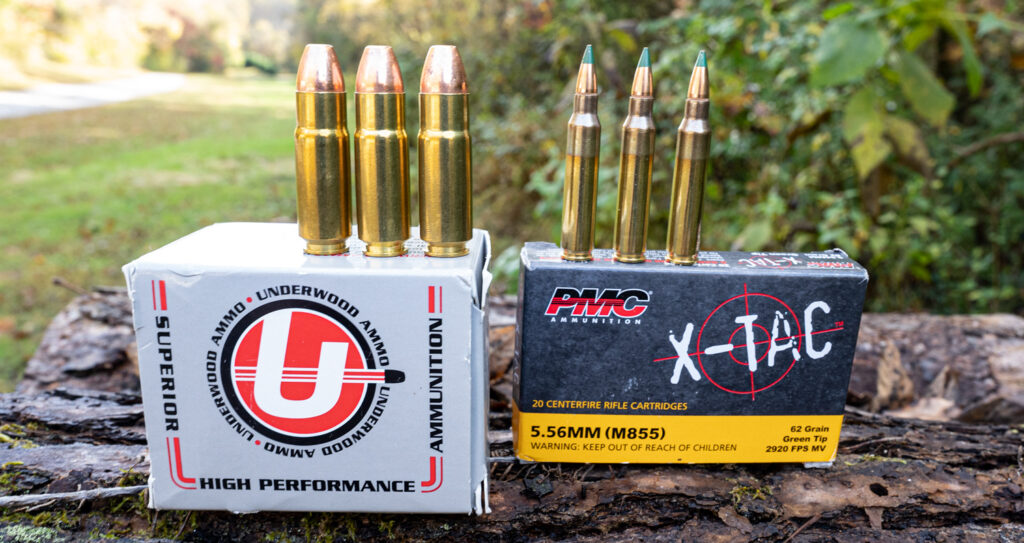
| 5.56x45 | 458 SOCOM | |
|---|---|---|
| Parent case | 223 Rem | 50 Action Express |
| Case type | Rimless, bottleneck | Rebated rim, bottleneck |
| Bullet diameter | 0.224 in | 0.458 in |
| Neck diameter | 0.253 in | 0.485 in |
| Shoulder diameter | 0.354 in | 0.531 in |
| Base diameter | 0.377 in | 0.541 in |
| Rim diameter | 0.378 in | 0.473 in |
| Rim thickness | 0.045 in | 0.041 in |
| Case length | 1.760 in | 1.575 in |
| Overall length | 2.260 in | 2.260 in |
| Case capacity | 28.5 gr H2O | 61.6 gr H2O |
| Maximum pressure | 62,366 psi | 35,000 psi |
458 SOCOM is a much bigger cartridge than the 5.56. Its bullet is twice as wide in diameter. Its case neck doesn’t taper nearly as much. In effect, the 458 case has more than double the capacity for propellant.
And it certainly needs it. The 458’s dimensions don’t reveal just how much heavier its bullet is – 250 to 600 grains, whereas 5.56 ammo usually has a bullet ranging in weight from 40 to 77 grains. From that comparison alone we can expect the 458 to do a whole lot more damage. In spite of its more potent propellant charge its extremely heavy bullet probably won’t outclass the 5.56 in terms of pure velocity.
The 458 and 5.56 are the exact same length, however, and that’s no accident. The 458 was intentionally designed to fit and feed from existing NATO magazines. That’s why it kind of looks like a 5.56 with a thyroid condition.
458 SOCOM vs. 5.56 Ballistics
| 5.56 Federal American Eagle 55gr FMJBT | 458 SBR 350gr FMJ | 5.56 Hornady BLACK 75gr | 458 SOCOM 400gr JSP | 5.56 Barnes VOR-TX 62gr | 458 SBR 350gr TSX | |
|---|---|---|---|---|---|---|
| Muzzle velocity (fps) | 3165 | 1650 | 2321 | 1490 | 3000 | 1650 |
| Velocity @ 50 yds | 2966 | 1537 | 2146 | 1379 | 2836 | 1535 |
| Velocity @ 100 yds | 2777 | 1431 | 1979 | 1279 | 2678 | 1428 |
| Velocity @ 150 yds | 2596 | 1335 | 1820 | 1193 | 2525 | 1331 |
| Velocity @ 200 yds | 2421 | 1248 | 1670 | 1121 | 2378 | 1244 |
| Velocity @ 250 yds | 2253 | 1173 | 1531 | 1064 | 2235 | 1169 |
| Velocity @ 300 yds | 2092 | 1111 | 1403 | 1017 | 2098 | 1106 |
| Velocity @ 350 yds | 1938 | 1060 | 1290 | 978 | 1965 | 1055 |
| Velocity @ 400 yds | 1791 | 1017 | 1192 | 944 | 1838 | 1013 |
| Velocity @ 450 yds | 1653 | 981 | 1114 | 914 | 1716 | 977 |
| Velocity @ 500 yds | 1523 | 950 | 1052 | 887 | 1601 | 946 |
| G1 ballistic coefficient | 0.25 | 0.287 | 0.234 | 0.262 | 0.292 | 0.283 |
| G7 ballistic coefficient | 0.126 | 0.166 | 0.133 | 0.171 | 0.147 | 0.164 |
| Elevation @ 50 yds | 0.04 | 2.9 | 1.01 | 3.85 | 0.13 | 2.9 |
| Elevation @ 100 yds | 0.58 | 3.59 | 1.62 | 4.6 | 0.68 | 3.59 |
| Elevation @ 150 yds | 0 | 0.03 | 0.01 | 0.03 | 0.01 | 0.01 |
| Elevation @ 200 yds | -1.88 | -8.42 | -4.24 | -10.65 | -2.03 | -8.48 |
| Elevation @ 250 yds | -5.24 | -22.45 | -11.61 | -28.23 | -5.6 | -22.6 |
| Elevation @ 300 yds | -10.32 | -42.78 | -22.7 | -53.49 | -10.92 | -43.08 |
| Elevation @ 350 yds | -17.39 | -70.16 | -38.22 | -87.15 | -18.21 | -70.65 |
| Elevation @ 400 yds | -26.78 | -105.27 | -58.96 | -129.9 | -27.76 | -106.03 |
| Elevation @ 450 yds | -38.88 | -148.77 | -85.82 | -182.4 | -39.89 | -149.87 |
| Elevation @ 500 yds | -54.17 | -201.29 | -119.68 | -245.29 | -54.98 | -202.81 |
| Muzzle energy (ft lbs) | 1224 | 2116 | 897 | 1972 | 1239 | 2116 |
| Energy @ 50 yds | 1075 | 1835 | 767 | 1688 | 1107 | 1832 |
| Energy @ 100 yds | 942 | 1592 | 652 | 1453 | 987 | 1586 |
| Energy @ 150 yds | 823 | 1384 | 552 | 1264 | 878 | 1376 |
| Energy @ 200 yds | 716 | 1211 | 465 | 1117 | 779 | 1202 |
| Energy @ 250 yds | 620 | 1070 | 390 | 1005 | 688 | 1062 |
| Energy @ 300 yds | 535 | 960 | 328 | 919 | 606 | 951 |
| Energy @ 350 yds | 459 | 873 | 277 | 849 | 532 | 866 |
| Energy @ 400 yds | 392 | 805 | 237 | 791 | 465 | 798 |
| Energy @ 450 yds | 334 | 748 | 207 | 742 | 405 | 742 |
| Energy @ 500 yds | 283 | 701 | 184 | 698 | 353 | 695 |
The 5.56 and 458 do not have dramatically different ballistic coefficients. That means they overcome air resistance in flight just about as effectively as one another. The real difference in the rounds’ respective trajectories stems from their disparate muzzle velocities.
A 5.56 can easily offer more than double the muzzle velocity of the 458. It can even travel faster at 500 yards than the larger round’s bullet right out of the muzzle! Because the faster 5.56 gives gravity far less time to pull it down to earth, it has a significantly flatter trajectory.
The 458’s steep bullet drop doesn’t necessarily make it inaccurate. Its ballistics aren’t all that dissimilar to the 45-70 Government, an old military round that’s still popular among deer hunters. Once you learn to accommodate its rainbow-like arc, putting 400 grains of lead and copper wherever you please becomes simple enough. But it’s going to take a lot more time to learn how to effectively aim so slow and heavy a bullet. Hitting multiple successive targets at different ranges requires a lot more mental calculation as well.
The flat trajectory of the 5.56 makes aiming far easier. If you want ammo that’ll let you pick off targets with relatively little practice, America’s favorite rifle round delivers.
Energy
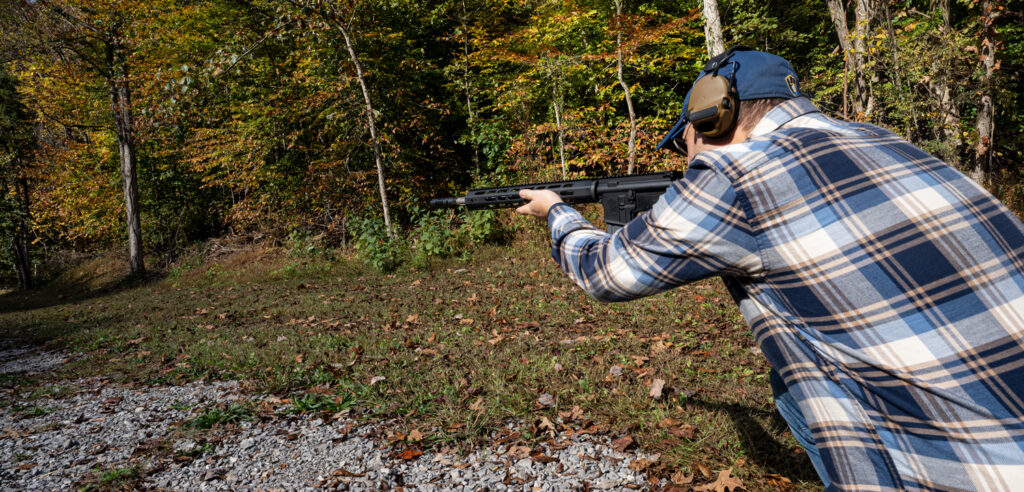
While a bullet’s ability to penetrate soft tissue and expand within it both contribute to stopping power, the amount of energy it carries on impact is the greatest factor by far. To this end the 458 absolutely dominates the 5.56 in terms of sheer energy.
The 458 certainly behaves like a round that was designed to put down a tenacious, intoxicated threat in one shot. Even at 500 yards it delivers more than twice the minimum amount of energy recommended for personal protection. It consistently delivers over 1,000 ft lbs of energy at 250 yards as well. That’s the force we recommend for ethical deer hunting. To put it simply, the 458 hits like Zeus throwing a bowling ball.
None of this is to suggest that the 5.56 is anemic. It can effectively neutralize a threat at long range as well, yet its efficacy for deer hunting is more questionable – past 100 yards, the hunter’s aim becomes increasingly crucial. But at the end of the day the 458 puts out about as much energy at 200 yards as the 5.56 does at two inches.
Recoil
Very heavy recoil makes it uncomfortable to fire a cartridge. Greater kick also makes a round less practical for self-defense, as you’ll have to spend more time reestablishing your aim in between shots.
The amount of recoil you actually experience is subjective. With that caveat in mind, we can objectively calculate how much recoil energy a cartridge will produce as measured in foot-pound force. You only need the round’s bullet weight, propellant weight, and muzzle velocity as well as the weight of the firearm.
For the sake of comparing the recoil energy of the cartridges detailed above, we’re assuming all 5.56 loads have 24 grains of propellant and all 458 loads have 33 grains. We’re also firing a hypothetical 6.5 lb rifle.
| Recoil Energy (ft lbs) | |
|---|---|
| 5.56x45 Federal American Eagle 55gr FMJBT | 4.22 |
| 5.56x45 Barnes VOR-TX 62gr TSX | 4.57 |
| 5.56x45 Hornady BLACK 75gr Interlock | 4.22 |
| 458 SOCOM SBR 350gr FMJ | 26.9 |
| 458 SOCOM SBR 350gr TSX | 26.9 |
| 458 SOCOM SBR 400gr JSP | 28.26 |
Wow – what a big difference! It hardly matters that the 458’s muzzle velocity is slower. Its five to eight times heavier bullet means the 458 can easily generate over six times as much recoil energy as the 5.56.
How much recoil you actually want to endure is entirely up to you. That said, it is generally agreed that a man’s frame can comfortably tolerate between 17 and 25 ft lbs of recoil energy, and the British Textbook of Small Arms (1909) calls for a military rifle to create no more than 15 ft lbs of recoil energy.
Granted, you could soften the 458’s recoil by selecting a heavier rifle. Even so it’s going to deliver a far more kick than the 5.56 is capable of. The key conclusion to draw here is that the 458’s recoil alone makes it the poorer choice for self-defense scenarios. These situations typically play out at short range, as it makes accurate, rapid fire far more difficult. (Although that’s a moot point if you never miss.)
Availability & Price of 458 SOCOM vs 5.56
Which is easier to find: the most popular rifle cartridge in the U.S., or a niche cartridge that never won mainstream appeal and which is only manufactured by a handful of companies? Gee, that’s a tough one.
We’re sure you get our point. Finding 5.56 ammo is as easy as walking into any gun shop. In similar market conditions, you’ll be lucky to find a single type of 458 ammo on the shelves. The two rounds’ price tags are also incomparable. The 458’s bullet alone weighs more than an entire 5.56 cartridge, so you’re buying a lot more lead and copper. And with lower demand for it, manufacturers justifiably ask more for the 458 in terms of price.
If you’re looking for ammo that you can typically afford to fire as often as you like, then the 5.56 wins no contest.
The Takeaway
The 5.56×45 deserves its tremendous popularity. Its flat trajectory lets even a novice place tight shot groups, its energy is sufficient to effectively neutralize nearly any threat over practical distances, and its recoil is pretty much negligible.
The 458 SOCOM’s only significant advantage is its stopping power. It absolutely hammers its target – even if its bullets are known to have trouble expanding past 150 yards. This makes the 458 the far better choice if you want to go hunting with an AR-15 style rifle.
In conclusion, the 5.56 is the all-purpose cartridge that serves well for self-defense, while the 458 is a hunter’s AR round.
You may not wish to employ the costly 458 for high volume target shooting and plinking, and aiming it well does indeed present a greater challenge. But when all you need to convert an AR-15 to 458 is a new upper receiver, barrel and bolt carrier group, why even bother declaring a winner in the 5.56×45 vs. 458 SOCOM debate? You’d might as well embrace both rounds!

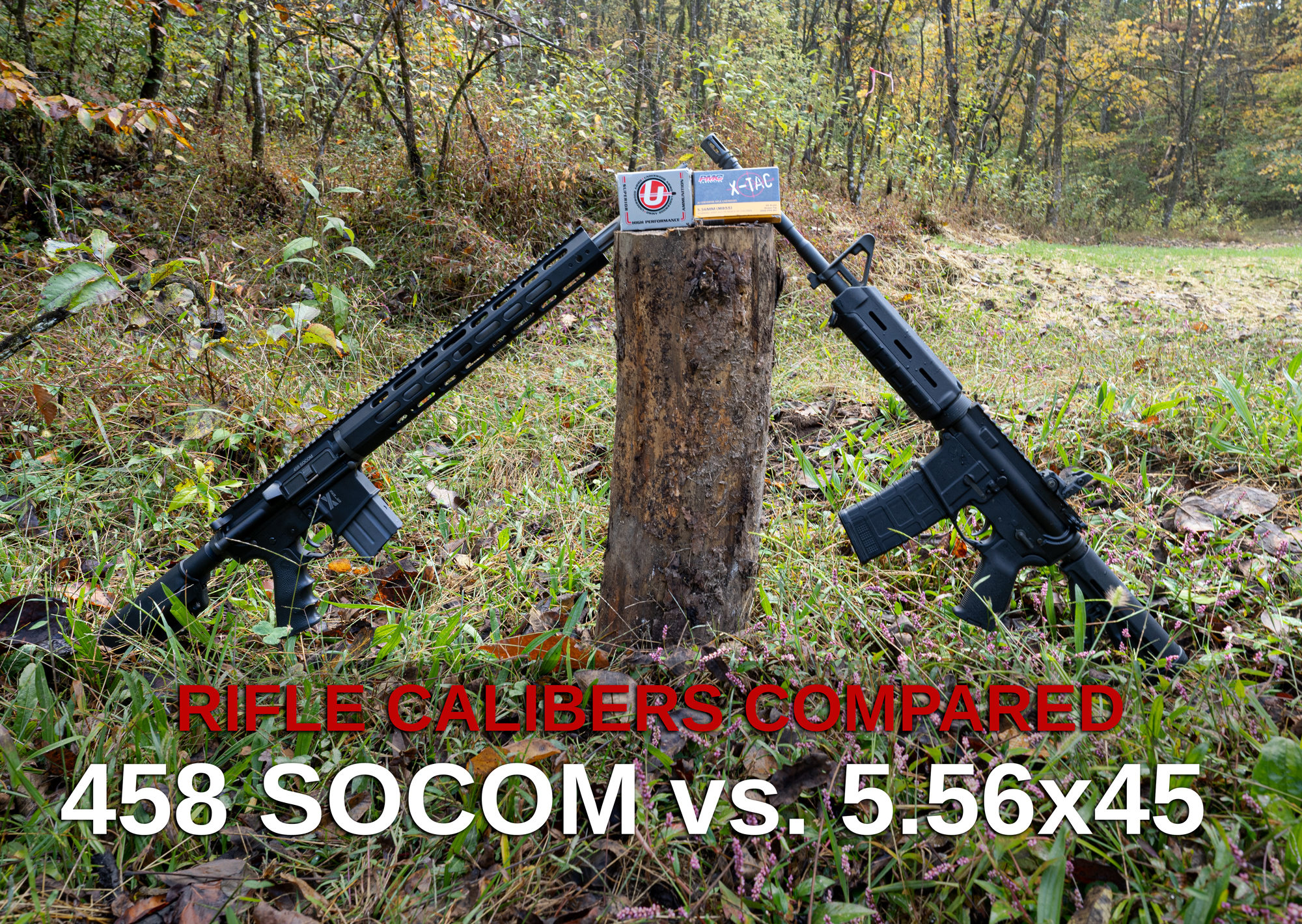

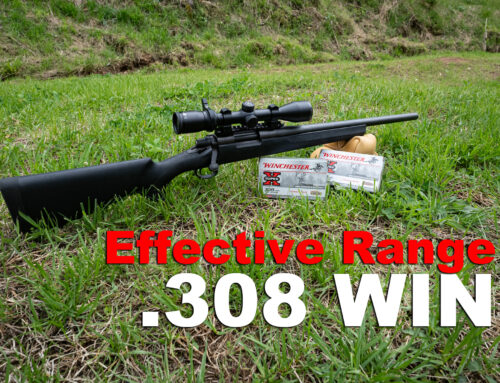
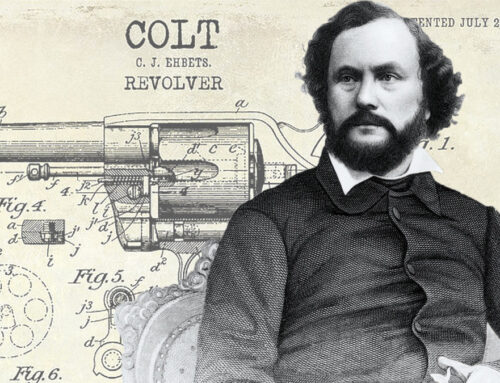
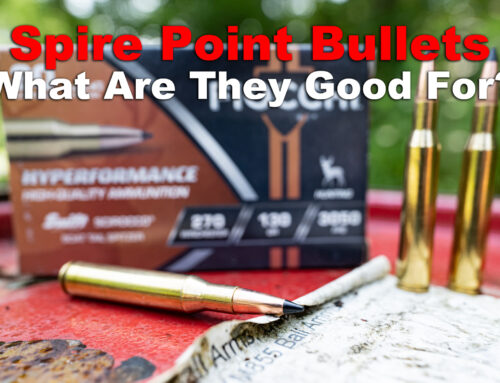
Leave A Comment